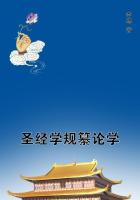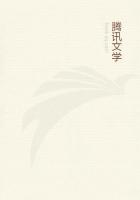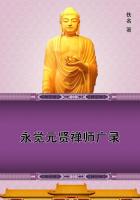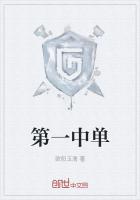Horn pens, tortoise-shell pens, nibs of diamond or ruby imbedded in tortoise shell, nibs of ruby set in fine gold, nibs of rhodium and of iridium imbedded in gold,--all have been adopted at different times, but most of them have been found too costly for general adoption.
Steel is proved to be sufficiently elastic and durable to form very good pens, and the ingenuity of manufacturers has been exerted to give to such pens as many as possible of the good qualities possessed by the quill pen.
The original flexible iron pen of modern times was an experimental affair probably, being mentioned by Chamberlayne as far back as 1685.
The first steel pens in regular use were made by Wise, in London, in 1803, and for many years thereafter.
His pen was made with a barrel, by which it was slipped upon a straight handle. In its portable form it was mounted in a bone case for the pocket.
Prejudice, however, was strong against them, and up to 1835 or thereabouts quills maintained their full sway, and much later among the old-fashioned folks.
To him, however, is due the credit of being the inventor of the modern steel pen.
It has been the thought of some people that Gillott was the progenitor of the steel pen, but he was not.
Arnoux, a French mechanic, made metallic pens with side slits in 1750. Samuel Harrison, an Englishman, made a steel pen for Dr. Priestly in 1780. Peregrine Williamson, a native of New York, while engaged as a jeweler in the city of Baltimore, made steel pens in 1800.
Perry's first pens were of steel, rolled from wire, the material costing seven shillings a pound. Five shillings each was paid the workman for ****** them;this was afterward reduced to thirty-six shillings per gross, which price was continued for several years.
It was Joseph Gillott, however, originally a Sheffield cutler, and afterwards a workman in light steel articles, as buckles, chains, and other articles of that class, who in 1822 gave impulse to the steel-pen manufacture.
Previous to his entering the business the pens were cut out with shears and finished with the file. Gillott adapted the stamping press to the requirements of the manufacture, as cutting out the blanks, forming the slits, bending the metal, and impressing the maker's name on the pens. He also devised improved modes of preparing the metal for the action of the press, tempering, cleansing, and polishing, and, in short, many little details of manufacture necessary to give them the required flexibility to enable them to compete with the quill pen. One great difficulty to be overcome was their extreme hardness and stiffness;this was effected by ****** slits at the side in addition to the central one, which had previously been solely used. A further improvement, that of cross grinding the points, was subsequently adopted. The first gross of pens with three slits was sold for seven pounds. In 1830 the price was $2.00; in 1832, $1.50;in 1861, 12 cents, and a common variety for 4 cents a gross. About 9,300 tons of steel are annually consumed, the number of pens produced in England alone being about 8,000,000,000.
Bramah patented quill nibs made by splitting quills and cutting the semicylinders into sections which were shaped into pens and adapted to be placed in a holder. These were, perhaps, the first nibs, the progenitors of a host of steel, gold, and other pens.
Hawkins and Mordan, in 1823, made nibs of horn and tortoise shell, instead of quill. The tortoise shell being softened, points of ruby and diamond were imbedded.
Metallic points were also cemented to the shell nibs.
Doughty, about 1825, made gold pens with ruby points.
Gold pens with rhodium or iridium points were introduced soon afterwards.
Mordan's oblique pen, English patent, 1831, was designed to present the nibs in the right direction while preserving the customary positions of the pen and hand.
The fountain pen carries a supply of ink, fed gradually to the point of the instrument. The first made by Scheffer was introduced about 1835 by Mordan.
The pressure of the thumb on a stud in a holder caused a continuous supply of ink to flow from the reservoir to the pen.
The "stylographic" is a reservoir pen shaped like a pencil, in which the flow of ink is regulated by pressure of a style or fine needle with blunt point upon the paper. It must be held in a vertical position.
All marks made with one, both up and down strokes, are equal in width.
Gold pens are now usually tipped with iridium, ****** what are commonly known as diamond points.
"The iridium for this purpose is found in small grains of platinum, slightly alloyed with this latter metal. The gold for pens is alloyed with silver to about sixteen carats fineness, rolled into thin strips, from which the blanks are struck. The under side of the point is notched by a small circular saw to receive the iridium point, which is selected with the aid of a microscope. A flux of borax and a blowpipe secure it to its place. The point is then ground on a copper wheel of emery. The pen-blank is next rolled to the requisite thinness by the means of rollers especially adapted for the purpose, and tempered by blows from a hammer. It is then trimmed around the edges, stamped, and formed in a press.
The slit is next cut through the solid iridium point by means of a thin copper wheel fed with fine emery, and a saw extends the aperture along the pen itself.
The inside edges of the slit are smoothed and polished by the emery wheel; burnishing and hammering produce the proper degree of elasticity."It is asserted that more steel is used in the manufacture of pens than in all the swords and guns in the world. This fact partly verifies the old saying, "The pen is mightier than the sword.""Three things bear mighty sway with men, The Sword, the Sceptre, and the Pen;Who can the least of these command, In the first rank of Fame will stand."















